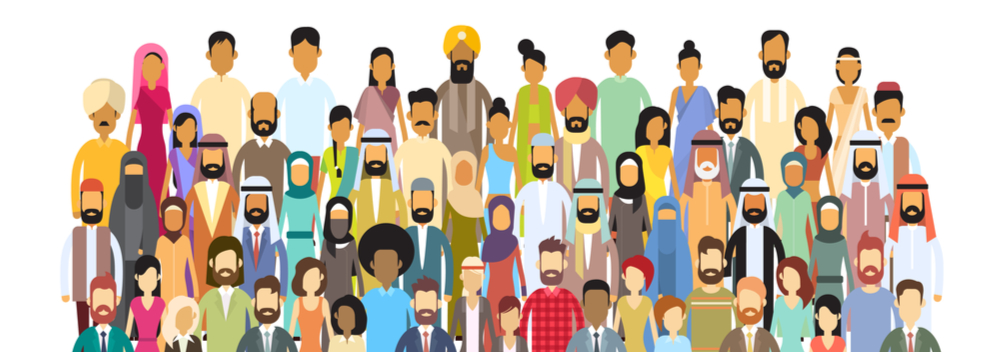What does inclusivity mean anyway?
- 5 Min Read
Should it be about fairness or flexibility? Asks Legal & General Group Protection
- Author: Legal & General | Sponsored
- Date published: May 6, 2022
- Categories

The Covid-19 pandemic has helped fast forward organisations into the world of the three-letter acronym: DEI, ESG, EVP. This is what everyone is talking about now.
The need to apply a lens to diversity, equity, and inclusion (DEI) across all aspects of the workplace – including benefits – is now a given in HR and boardroom circles. This provides a sound basis for the ‘S’ in Environmental, Social and Governance (ESG) criteria. And for helping set out what the organisation has to offer its employees – in, other words, why bother working there – as part of the Employee Value Proposition (EVP), communicating this clearly and openly, as opposed to an internal reference that is kept in a drawer
DEI arguably represents the thread which runs through everything, as highlighted above (and including some not yet mentioned acronyms: CSR, EE, EX, among others) so it stands to reason that helping clients apply a DEI lens to wellbeing and benefits will be valuable and valued.
And there is even evidence to point to this. A recent survey conducted by Aon found 7 in 10 (72%) HR leaders were considering introducing more benefits which support DEI.
What is in a name?
But what is diversity, equity, and inclusivity? These are all such broad words. Words which are in danger of leading to decisions within organisations based on social media led debates, as opposed to what is good for employees and business long-term. It is often translated to meaning ‘fairness’. In a benefits sense, this might lead to a minimum level of coverage for all.
If that is the case, organisations have their work cut out, because only just over half (57%) of employees think their employer is good at ensuring benefits and wellbeing initiatives are available to everyone, according to Legal & General’ Wellbeing at Work Barometer.
Employers on the other hand are much more confident, with 8 in 10 (81%) saying they have got this sorted. But if employees are not seeing or feeling it, something is going wrong here.
A goal of something akin to a minimum level of benefit coverage for all, represents a big-ticket improvement, ensuring all employees, regardless of background, get something. However, it is important to also empower employees who want to scale up benefits to suit their needs.
Inclusivity must feel genuine. So, it must recognise that everyone’s needs are different. It should not feel like the organisation is jumping on the bandwagon; a box-ticking exercise. An exclusive focus on fairness might be taken as such.
Choice matters
Start by recognising everyone is unique. Then consider being smart about personalising the benefit offer, giving employees choice. Focus on this rather than ‘diversity, equity and inclusion’ as such, to help keep things simple.
This was largely the rationale behind Legal & General ‘Protect’, launched last year. ‘Protect’ is designed to be a next generation, mobile-first platform, which brings to market a new way to access and personalise group life, income protection and critical illness cover; either employer-paid or voluntary (employee-paid). Bringing together the best of Group (cost efficiencies) and Retail (claims certainty), individuals can be given the choice to dial up or down cover levels whenever they choose, according to need.
And even where employer budgets are prohibitive – or where there is perhaps a mix of permanent employees and contractors within an organisation – ‘Protect’ can be used by employers to democratise benefits, providing access at no cost to them and for employees, at costs which potentially could be favourable by being part of a group arrangement.
Genuinely personalised
Where group income protection (IP) is concerned, the product has evolved to such an extent it is no longer all about cover that provides only an income.
The insurance aspect is still there and does its job really well. But, over and above that, group IP with Legal & General also brings to employers a multidisciplinary team (MDT) to help with absence management and prevention.
This means personalised support to help employees stay in work; through services like the Employee Assistance Programme (EAP), advice for elder care needs and every day chronic condition management. Or to get back to work after even a short period of absence; through personalised care pathways with specialisms across musculoskeletal and mental health, work-related stress, cancer and long-Covid.
Also, personalised support to HR and line managers. For example: where there might be specific employee concerns; for help with suitable reasonable adjustments in line with the Equality Act 2010; support to carry out stress risk assessments; or guidance in how to communicate wellbeing and benefits in a way that is more personalised and relatable.
Such is the extent of this support now, that industry body GRiD recently said it would be wise for employers to review their wellbeing provision against group protection packages especially in supporting hybrid workforces.
Carrying out such a review through a DEI lens would undoubtedly pay dividend.
Next steps for assessing benefit inclusivity
Businesses now need to investigate their current benefit strategy, HR systems and third-party providers. They also need to challenge their policies and ask whether they all truly value, respect, and support employees. For example, ask:
- Does current group life, income protection and critical illness cover allow individuals to dial up or down cover, whenever they like, according to need?
- Do current benefits support individuals with chronic (long term) conditions to stay in work, in line with the government push for employers to do more here?
- Do wellbeing providers proactively support early intervention, when an individual goes off sick, to help ensure personalised support with life- and work- ability representing core health outcomes?
- Does the organisation consider the role of its benefits programme in helping reduce health inequalities? Legal & General’s recently published review, in partnership with the Institute of Health Equity at UCL, set out ways in which this might be achieved.









